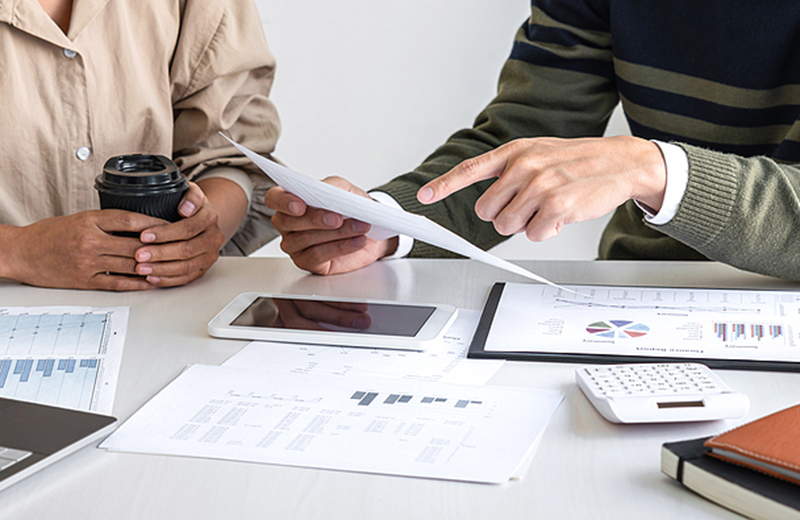Understanding the Key Components of a Balance Sheet

A balance sheet is a fundamental financial statement that provides a snapshot of an organization’s financial position at a specific point in time. Whether you’re a business owner, investor, or non-profit manager, understanding how to read a balance sheet is crucial for assessing the financial health of an organization.
Here’s a breakdown of the key components of a balance sheet and how to interpret them:
- Assets: Assets represent everything the organization owns and are typically classified into two main categories: current and non-current.
- Current Assets: These are assets expected to be converted into cash or used up within one year. Common examples include:
- Cash and Cash Equivalents: Liquid assets like cash on hand or in bank accounts.
- Accounts Receivable: Money owed to the organization by customers or donors.
- Inventory: Goods or materials held for sale or use.
- Prepaid Expenses: Payments made for services or goods before they are received.
- Non-Current Assets: These assets are expected to provide value over a period longer than one year. They include:
- Property, Plant, and Equipment (PP&E): Tangible assets such as buildings, machinery, and land.
- Intangible Assets: Non-physical assets like patents, trademarks, and goodwill.
- Long-Term Investments: Investments held for more than one year, such as stocks or bonds.
Key Takeaway: Assess the proportion of current versus non-current assets to understand the organization’s liquidity and long-term investment strategy.
- Current Assets: These are assets expected to be converted into cash or used up within one year. Common examples include:
- Liabilities: Liabilities are obligations that the organization must settle in the future and are also divided into current and non-current categories.
- Current Liabilities: These are debts or obligations due within one year. Examples include:
- Accounts Payable: Money the organization owes to suppliers or service providers.
- Short-Term Loans: Loans or credit lines due within the next year.
- Accrued Expenses: Costs incurred but not yet paid, such as wages or utilities.
- Non-Current Liabilities: These are obligations that extend beyond one year. They include:
- Long-Term Debt: Loans or bonds that are payable over a period longer than one year.
- Deferred Tax Liabilities: Taxes that are owed but will be paid in the future.
- Pension Liabilities: Obligations related to employee retirement benefits.
Key Takeaway: Evaluate the ratio of current to non-current liabilities to gauge the organization’s short-term versus long-term financial obligations.
- Current Liabilities: These are debts or obligations due within one year. Examples include:
- Equity: Equity represents the residual interest in the assets of the organization after deducting liabilities. It reflects the ownership value or net worth of the organization.
- For-Profit Organizations:
- Common Stock: Represents ownership shares issued to shareholders.
- Retained Earnings: Accumulated profits that have been reinvested in the business rather than distributed as dividends.
- Additional Paid-In Capital: Funds received from shareholders in excess of the nominal value of the stock.
- Non-Profit Organizations:
- Net Assets: The difference between total assets and total liabilities, divided into unrestricted, temporarily restricted, and permanently restricted net assets. This classification helps to track the restrictions placed by donors on the use of funds.
Key Takeaway: Review equity to understand the financial stability and overall value of the organization. Positive equity indicates that assets exceed liabilities, while negative equity suggests potential financial distress.
- For-Profit Organizations:
- The Balance Sheet Equation
The balance sheet is based on the fundamental accounting equation:
Assets = Liabilities + Owners EquityThis equation must always balance, ensuring that all assets are financed by either debt or equity. If the equation does not balance, it indicates a discrepancy that requires investigation.
Key Takeaway: Use the balance sheet equation to verify the accuracy of the financial statement and ensure that the reported values are correct.
- Key Ratios and Metrics: Analyzing key ratios derived from the balance sheet can provide deeper insights into the organization’s financial health.
- Current Ratio: Measures liquidity by comparing current assets to current liabilities. Current Ratio = Current Assets/Current Liabilities
- Debt-to-Equity Ratio: Assesses the financial leverage by comparing total liabilities to total equity. Debt to Equity Ratio = Total Liabilities / Total Equity
- Return on Assets (ROA): Evaluates how effectively assets are being used to generate profits. ROA Ratio = Net Income / Total Assets
- Key Takeaway: Utilize these ratios to evaluate liquidity, financial leverage, and operational efficiency, providing a comprehensive view of the organization’s financial performance.
In conclusion, understanding the different parts of a balance sheet allows you to assess the financial stability, liquidity, and overall health of an organization. By analyzing assets, liabilities, equity, and key ratios, you can make informed decisions and gain valuable insights into financial performance.
Thanks for reading!